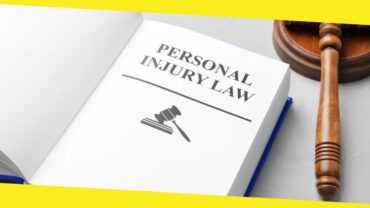Do Pedestrians Always Have the Right of Way?
This post was last updated on February 24th, 2024

Each year, over 100,000 pedestrians are killed or injured by automobile collisions. Whether the negligence stems from the pedestrian or the driver, the consequences are often severe.
But, do pedestrians have the right of way in every scenario? That depends, and it’s important that you understand the circumstances so that you can stay out of the road (and hospital).
Not sure where to start? Don’t worry, we got you covered.
Let’s take a look at everything you need to know about it.
The Answer Isn’t Always ‘Yes’
And, you can’t expect that other drivers will always yield to you even when you’re out of line. It’s not uncommon at all for pedestrians to assume they have the right of way and then end up injured.
While different states may have slightly different policies, there are a handful of situations where the pedestrians are in the right.
Traffic Lights
At intersections with traffic lights, pedestrians have the right of way as long as they are signalled to cross the road. This concept is similar to how drivers in front of green light have the right of way to move forward.
Things can get a bit murky when making right turns, however.
When you’re crossing the street and a motorist is attempting to make a turn on a red light, the situation should go like this:
The motorist stops in accordance with the red light
They continue to yield as you cross the road
They then continue making their right turn
Unfortunately, many pedestrians are struck during this type of scenario, often as a result of a reckless driver. So, always make sure that a person making a right turn on a red light is continuing to yield before you cross the road.
Intersections with No Enforcement
As if right turns on red lights didn’t complicate things enough, there are sometimes intersections with no lights or traffichttps://www.mostinside.com/wp-admin/profile.php signs at all!
Even though these locations won’t have a designated crosswalk, pedestrians are still allowed to cross the road. If a motorist finds themselves approaching a pedestrian, they should slow down or stop and allow that individual to cross.
It’s particularly imperative that motorists be on the lookout for people crossing the roads while driving through residential areas, as children are often at play.
When crossing the road in locations with no enforcement, wait until the person behind the wheel is stopped before moving in front of their vehicle.
Traffic Signs That Ask Drivers to Stop or Yield
Luckily, this situation is much more straightforward.
If a driver has a traffic sign that tells them to stop or yield, then they are required to let you cross the road before they continue driving. Before you walk out into the street, however, look to see if the car has is at a complete stop (or has slowed down in case of a yield sign).
If the driver doesn’t appear to see you or abide by their obligations, do not cross in front of them.
What Happens If You Get Injured?
If you’ve had the misfortune of being injured by someone driving a vehicle, you’ll need to examine the situation to determine who was at fault.
You (as the pedestrian) will be considered not at fault if:
You were struck by a vehicle while standing on the sidewalk or side of the road.
You were using a crosswalk while the “walk” signal was displayed.
You were crossing the road at an unenforced intersection.
A driver failed to yield despite a traffic sign or traffic signal being present.
From here, it’s best to seek legal counsel to determine your next options.
If you are able to prove that you weren’t at fault, you often won’t have trouble securing financial compensation for your medical bills (which can sometimes run into the hundreds of thousands in expenses).
You can learn more about that here if you’ve been injured in a car accident. Here you can find the best personal injury lawyer.
Advice For Staying Safe
It cannot be stressed enough that you must anticipate that drivers will not always do what they are supposed to do. People are bound to make mistakes, and putting yourself in harm’s way could land you in the hospital or worse.
Pedestrians also don’t rule the streets. If you’re crossing the road without using a crosswalk and aren’t at an unmarked intersection, it’s your responsibility to yield to oncoming vehicles.
If you’re walking at night, wearing white or bright clothing can help motorists see you when crossing the road. This is especially important in areas with poor illumination (such as backroads or rural locations).
You should also try and be as predictable as possible before crossing the road.
Practices, like making eye contact with the driver, using hand motions, and slowly walking into the road, can all show the other person that you’re about to move in front of their vehicle.
Lastly, avoid crossing busy roads without using a designated crosswalk. Even if it’s a few hundred extra feet to get there, it could potentially save your life.
Understanding ‘Do Pedestrians Have The Right of Way?’ Can Seem Difficult
But it doesn’t have to be.
With the above information about ‘Do Pedestrians Have The Right of Way?’ in mind, you’ll be well on your way to making sure that everyone stays safe no matter the situation.
Want to learn more about what to do after an accident? This article has plenty of useful information.
Recommended For You
7 Reasons to Contact a Mesothelioma Lawyer
Most Inside
Most Inside offers high-quality recommendations and valuable updates to enhance all aspects of your life, providing premium guidance and enriching experiences.




